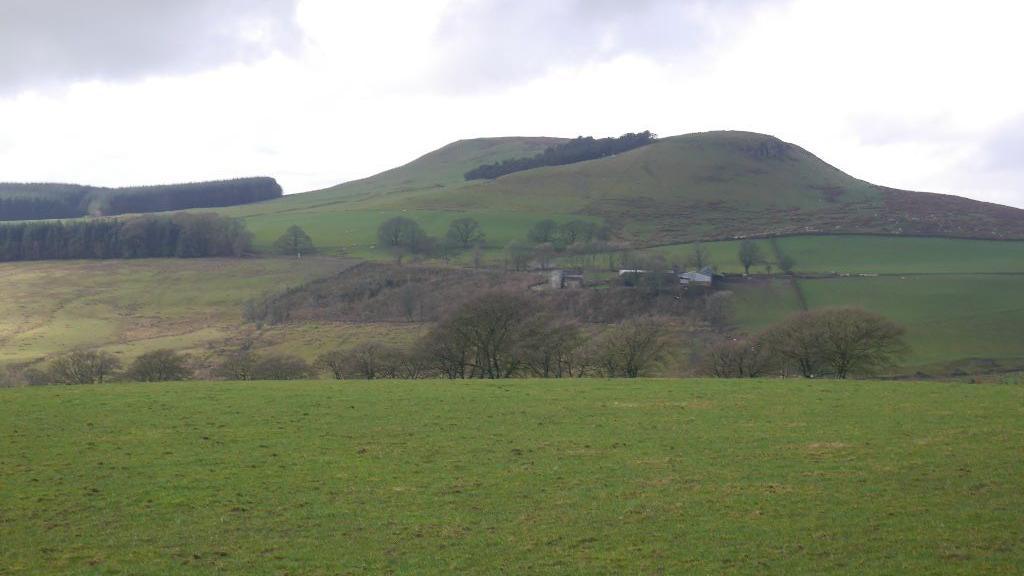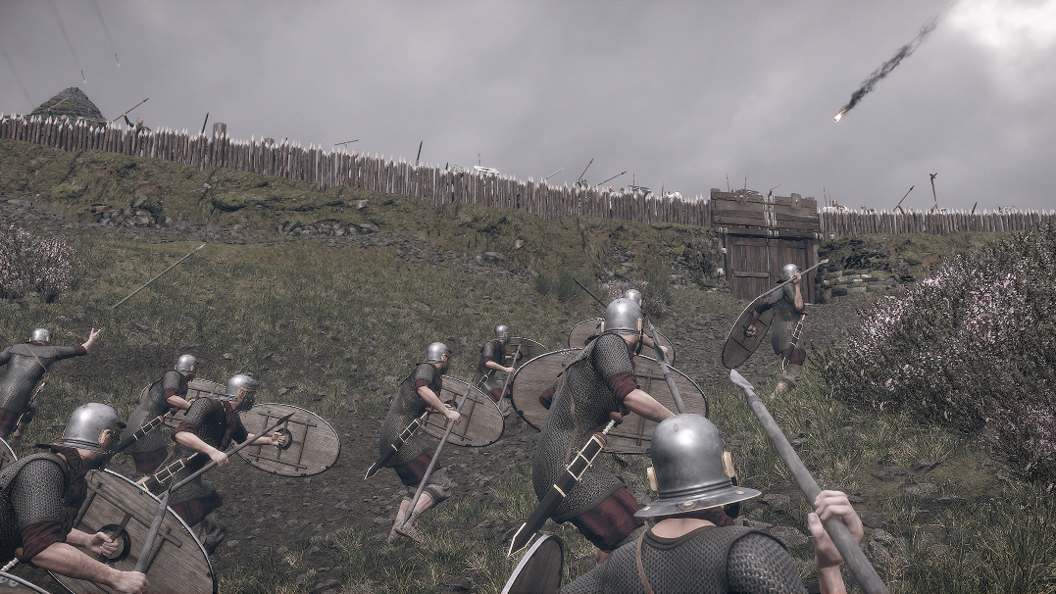Hillfort siege site excavations cleared to proceed

A new dig hopes to reveal more details of the siege of Burnswark
- Published
The Scottish government has cleared the way for an archaelogical dig to shed more light on the story of a Roman siege of a British hillfort.
The victory at Burnswark Hill near Lockerbie in 140AD is considered to be one of Rome's greatest military triumphs north of Hadrian's Wall.
A new dig will aim to establish whether siege works at the site were a genuine military engagement or a training exercise.
A Scottish government planner concluded the work did not need further scrutiny by ministers and could be cleared to Historic Environment Scotland (HES) which has said it is minded to grant scheduled monument consent.

A digital reconstruction of the siege - based on forensic ballistics, archaeological mapping and geophysics - was revealed earlier this year
Burnswark Hill originates from the early Iron Age - about 800BC - and was defended by earth ramparts and contained timber roundhouses.
Two trenches would be dug to examine the site further with the aim of contributing towards both Scottish and international research and increase understanding of Roman military activity in Scotland.
The site would be fully reinstated after the excavations.
HES said it believed the work could deliver "nationally important public benefits" which would outweigh any "limited, well-managed impact on the monument's cultural significance".
A Scottish government planner agreed with that assessment and concluded there was no need to call in the application for further scrutiny.
The most precise reconstruction yet of the siege - developed using crime scene forensics - was unveiled earlier this year.
Visitors to the Trimontium Museum in Melrose can now use headsets for a virtual walkthrough of the unfolding drama.
Related topics
- Published10 July
